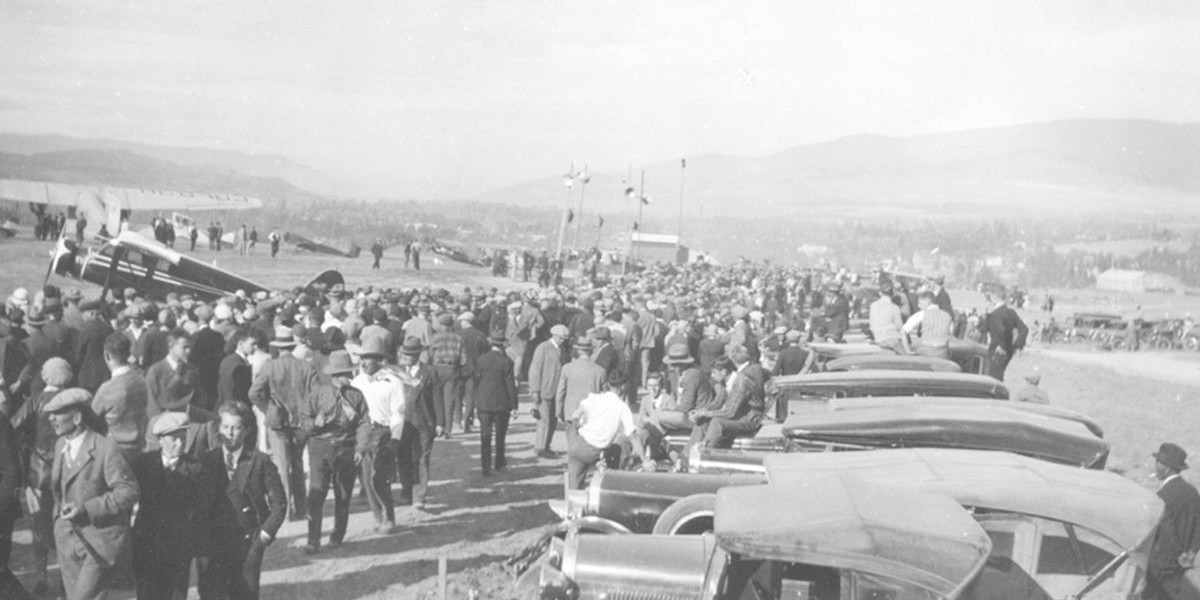Vernon Airport History

The Vernon airport was initially located south of the city at the Vernon Army Cadet Camp. The camp parade square and baseball field now occupy the exact spot. In 1919, a Curtis “Jenny” from Kamloops was the first airplane to land there. Three days later, Captain Ernie Hoy flew from Vancouver to Vernon to deliver a letter from the mayor of Vancouver. That became the first airmail delivery in Canada.
The first Air Pageant was held in Vernon in 1931 followed by an Interior Provincial Airshow in 1932. Vernon was considered as a possible landing spot on the route to Alaska.
In 1935, four local boys completed a two-place open cockpit airplane (CF-AOM) which they called the “City of Vernon”. It was flown to Edmonton becoming the first homebuilt aircraft to fly over the Rockies. A MURAL depicting this aircraft and pilots Eldon Seymour and Jim Duddle is located in downtown Vernon.
During the second war, general aviation was grounded by the Federal Government. The airport was taken over by the military for training. When the war ended, the airport was relocated to the farmlands of Okanagan Landing. Much of those negotiations included Dick Laidman (later president of Pacific Western Airlines) who is considered the founder of the Vernon Airport (also known as Laidman Field). The airport was a grass field approximately half the length it is today.
The Vernon Flying Club was the sole tenant of the airport during the late forties and early fifties. There were only four aircraft based on the field. The 1,200′ X 12′ runway was eventually paved. The two-inch thick pavement was laid over four inches of gravel.
The city hangar was built during the early 1950’s, and airport usage grew during the 60’s and 70’s. The strong economy of the 1970’s saw close to eighty aircraft located on the field. Operation then was a regional district function. The runway (07-25) had been extended westward onto Indian Reserve property giving 2200 feet, but it was still only twelve feet wide.
The airport remained basically unchanged until 1988 when the present runway was built. The Vernon Flying Club and Tri-Lake Flight Centre were the primary forces behind this development. And when the city limits were expanded to include Okanagan Landing, the airport fell under the authority of the City of Vernon.
During the 1990’s, in an attempt to avoid liability, the city temporarily operated the airport under a separate corporation. Eventually, that was abandoned and the airport is now administered by a manager. Today, the Vernon Airport is one of the most popular and busiest general aviation airports in the BC interior and destined to continue growing.
Studies have shown that even a modest-sized airport such as Vernon can be a huge economic generator for the city and the North Okanagan Valley. In the words of the BC Aviation Council “…(an) airport is one mile of asphalt which gives access to the world”.
Prepared with the assistance of VFC Members T.R. Thorburn and Rob McDicken